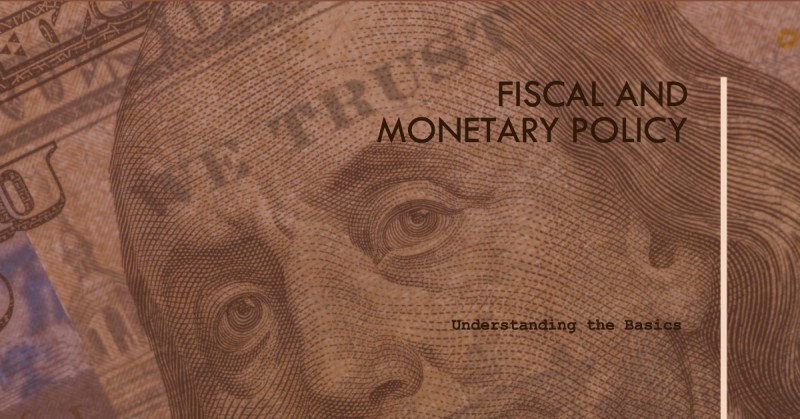
In the realm of economics, two critical tools employed by governments and central banks to stabilize and manage an economy are fiscal policy and monetary policy. These policies play pivotal roles in influencing economic activities, controlling inflation, managing unemployment, and promoting overall economic growth. In this article, we will delve into the concepts of fiscal policy and monetary policy, explore their differences and similarities, and understand their significance in shaping an economy.
1. What is Fiscal Policy?
Fiscal policy refers to the government's use of taxation and public expenditure to influence the overall state of the economy. It involves decisions regarding the collection and allocation of funds to achieve desired economic outcomes. Fiscal policy is typically implemented through changes in government spending and taxation levels.
1.1 Objectives of Fiscal Policy
The primary objectives of fiscal policy include:
1.2 Tools of Fiscal Policy
To achieve its objectives, fiscal policy relies on various tools, such as:
Taxation: Governments can adjust tax rates to influence consumer spending, investment, and overall economic activity. Lower tax rates often encourage higher spending and investment.
Government Spending: Governments can increase or decrease public expenditure to stimulate or slow down economic growth, respectively. Increased spending can lead to job creation and increased demand for goods and services.
2. What is Monetary Policy?
Monetary policy, on the other hand, refers to the actions taken by a central bank to manage the money supply and interest rates in an economy. It aims to control inflation, stabilize prices, and promote economic growth. Monetary policy primarily operates through changes in interest rates and the availability of credit.
2.1 Objectives of Monetary Policy
The objectives of monetary policy typically include:
2.2 Tools of Monetary Policy
To achieve its objectives, a central bank uses various tools, including:
Interest Rates: By adjusting the benchmark interest rates, central banks can influence borrowing costs, investment decisions, and consumer spending. Lower interest rates tend to stimulate economic activity.
Open Market Operations: Central banks can buy or sell government securities to influence the money supply in the economy. Purchasing securities injects money into the system, while selling securities reduces the money supply.
3. Differences between Fiscal Policy and Monetary Policy
While both fiscal policy and monetary policy aim to stabilize an economy, they differ in several key aspects.
3.1 Policy Makers
Fiscal policy is formulated and implemented by the government through the legislative process. The responsibility lies with the executive branch, such as the finance ministry or treasury department. In contrast, monetary policy is primarily executed by the central bank, which operates independently from the government.
3.2 Nature of Policy
Fiscal policy directly affects the government's budget and involves decisions regarding taxation, public spending, and borrowing. It has a more extended time frame and can have long-lasting effects on an economy. In contrast, monetary policy deals with the money supply, interest rates, and credit availability. It has a more immediate impact on the economy and can be adjusted relatively quickly.
3.3 Implementation Process
Fiscal policy requires legislative approval and can be subject to political processes and debates. It involves the passing of budgets, tax laws, and expenditure plans. In contrast, monetary policy decisions are made by the central bank's monetary policy committee or board of governors, often through meetings and deliberations.
4. Similarities between Fiscal Policy and Monetary Policy
While fiscal policy and monetary policy differ in their implementation and nature, they also share some commonalities.
4.1 Economic Stabilization
Both fiscal policy and monetary policy aim to stabilize the economy by managing fluctuations in economic activity. They strive to maintain a balance between economic growth and stability.
4.2 Impact on Interest Rates
Both policies have the potential to influence interest rates. Fiscal policy indirectly affects interest rates through its impact on government borrowing and overall demand in the economy. Monetary policy directly influences interest rates by adjusting the benchmark rates.
4.3 Influence on Economic Growth
Both fiscal policy and monetary policy can influence economic growth. By increasing government spending or reducing taxes, fiscal policy can stimulate economic activity and promote growth. Similarly, monetary policy can influence economic growth by adjusting interest rates to encourage borrowing and investment.
5. The Role of Fiscal Policy and Monetary Policy in Economic Management
Fiscal policy and monetary policy play crucial roles in managing an economy. They complement each other and are often used in conjunction to achieve desired economic outcomes. When implemented effectively, they can help stabilize prices, control inflation, promote employment, and foster sustainable economic growth.
Conclusion
In conclusion, fiscal policy and monetary policy are essential tools used by governments and central banks to manage and stabilize economies. While fiscal policy focuses on government spending and taxation, monetary policy primarily revolves around interest rates and money supply. Although they have distinct differences in terms of implementation and nature, they share common goals of promoting economic stability and growth.
Revenue from direct taxes increases 11% to Rs. 3,79,760-Cr
Raghuram Rajan Slammed for Disregarding India's SupeL&T: Empowering India's Growth and Transformation Through Engineering Excellencerpower Status
India's Economic Strategy: Shaping Prosperity and Growth Towards 2035